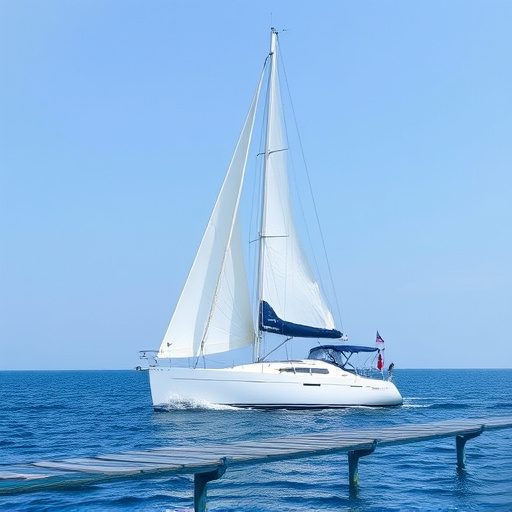Marine batteries require specific care due to extreme conditions. Lithium-ion batteries are preferred for their superior performance and durability over lead-acid types. Efficient charging practices, including automatic voltage regulation and overcharge protection, extend battery life. Choosing chargers designed for marine use, considering battery type, amperage, and charging speed, ensures optimal health and performance in diverse marine environments. Regular monitoring and avoiding sulfation through complete discharge cycles further enhance the longevity of marine batteries.
Marine batteries are essential for powering your vessel, so proper charging is crucial for longevity and performance. This guide offers top tips to keep your marine battery in peak condition. First, grasp the fundamentals of marine battery operation. Next, select a suitable charging system tailored to your needs. Lastly, master the art of optimizing charging cycles for maximum durability. By following these steps, you’ll ensure your marine battery remains robust and reliable.
- Understanding Marine Battery Basics
- Choosing the Right Charging System
- Optimizing Charging for Durability
Understanding Marine Battery Basics

Marine batteries are specifically designed to withstand the unique challenges of naval and aquatic environments, such as varying levels of heat, humidity, and vibration. Unlike their terrestrial counterparts, marine batteries must be robust enough to handle prolonged submergence and exposure to salt water, which can accelerate corrosion. Understanding these fundamentals is crucial for efficient marine battery charging and maintenance.
The typical marine battery is either a lead-acid or lithium-ion type. Lead-acid batteries are commonly used due to their lower cost but require regular maintenance, including checking electrolyte levels and ensuring corrosion-free connections. Lithium-ion batteries, though more expensive, offer superior performance, longer lifespan, and reduced weight, making them popular for modern marine applications. Effective charging practices should consider the specific type, capacity, and age of the battery to optimize its health and prolong its service life.
Choosing the Right Charging System

Choosing the right charging system is a crucial step in maintaining your marine battery’s health and performance. In the maritime world, where batteries are subjected to varying weather conditions and frequent use, selecting an efficient and reliable charger becomes paramount. Look for chargers designed specifically for marine applications, which often incorporate advanced features like automatic voltage regulation, overcharge protection, and reverse polarity detection. These functions safeguard your marine battery from potential damage caused by improper charging.
Consider factors such as the type of battery you have (lead-acid, lithium, etc.), its amperage requirements, and the charging speed needed to match your boating activities. For instance, frequent short trips might require a faster charger, while longer stays at anchor may necessitate a slower, more efficient charging process to prevent overcharging. Always opt for a charger that aligns with these unique marine battery demands.
Optimizing Charging for Durability

Maintaining a healthy marine battery is paramount for ensuring reliable performance and extending its lifespan at sea. One key aspect to consider is optimizing charging practices for durability. Firstly, understand that overcharging can significantly damage marine batteries, leading to reduced capacity and shorter service life. Therefore, it’s crucial to regulate the charging process, using smart chargers designed for marine applications that automatically detect and adjust voltage levels accordingly.
Secondly, avoid prolonged periods of undercharging. While occasional slight undercharges may not cause immediate harm, consistent partial discharges can lead to sulfation—a build-up of sulfur on battery plates that hinders their ability to hold a charge. To prevent this, regularly monitor battery voltage during charging and ensure complete discharge cycles. By adhering to these practices, you contribute to the overall longevity and performance of your marine battery, ensuring smooth sailing for years to come.
By understanding the fundamentals of marine battery operation, selecting a suitable charging system, and implementing optimal charging practices, boaters can significantly extend the lifespan of their batteries. These tips ensure your marine battery remains in top condition, delivering reliable power for years to come.
